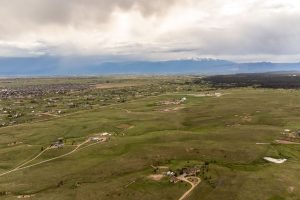The Denver Basin and individual wells
By Terry Stokka
I have written a few articles in the past about water. Those articles have been about water use, the Colorado River and other water related topics. In this article I would like to focus on our own Denver Basin under us and our individual wells. I will present it in bullet form for easier reading.
Water is a very precious and limited resource in Colorado
- Black Forest gets an average of 18 inches of precipitation per year — 88 inches of snow.
- Colorado Springs gets 15 inches of precipitation — 35 inches of snow.
The Denver Basin is a giant bowl comprised of four bowls within it.
- The total bowl stretches from Greeley to the south side of Colorado Springs.
- The basin extends from the front range out to Limon.
- The top aquifer, the Dawson, is the smallest; it extends from south Denver to Woodmen Road.
- Virtually all of our private wells are in the Dawson aquifer.
- The bowls in the basin are four separate aquifers of water.
- The aquifers are the Dawson (top,) Denver, Arapahoe and Laramie-Fox Hills (bottom).
Garden of the Gods and Red Rock Open Space are edges of the bowls sticking up out of the ground.
- Red Rocks in Denver and Flatirons in Boulder are western edges of the bowls.
State water officials believe the four aquifers are sealed from each other; however, no one knows for sure how much the aquifers are sealed from each other Tests from an Arapahoe well affected the Denver and Dawson aquifer above it.
- Drilling logs do not show a clear, impermeable boundary between aquifers.
- Denver aquifer is considered to be a “leaky” aquifer to Dawson above and Arapahoe below.
- Water models constructed by the state and private companies vary in their conclusions.
- If these bowls are being recharged at all, it is a slow process over generations of time.
- Majority of the recharge is probably occurring along the edges along the front range.
- Only a little over half of the Denver Basin water can be economically removed.
- Through continuous, long-term use, a well becomes less and less efficient.
- After several years, it is not economical to pump because of decreasing output.
A well-driller with 30 years of experience says the geology of the Denver Basin is not homogeneous
- The boundary between aquifers is not solid nor consistent.
- The basin has interlocking and overlapping layers of sand, gravel, sandstone and claystone.
- Wells 1/4 mile apart can produce widely varying amounts of water.
- Wells only 200 feet apart can have widely different static levels, which is the distance from
- ground level to the water in the well.
- Having a water allocation or water right is no guarantee of actual amount of water.
- “Paper water does not equate to wet water.”
Water use in the Denver Basin is 62% agriculture, 20% municipal and 12% domestic (private wells).
For residential households in the Black Forest, the State of Colorado considers water use as follows:
- An acre foot of water (325,851 gallons) is 1 acre (a football field minus 10 yards); 1 foot deep in water.
- The average household uses 0.35 acre-feet of water per year. This is 313 gallons per day.
- If a household has animals or landscaping, the water use goes up to about 0.5 acre-feet per year.
- 90% of the water used in a household is returned into the ground via the septic system.
- Just 10% is actually consumed or evaporated into the air.
- 15% of the water used for watering gardens and lawns is returned into the ground.
- 85% of irrigation water is evaporated into the air and not soaked into the ground.
- 100% of the water used for animal watering is consumed and none is returned into the ground.
I hope this summary will give you an education into our Denver Basin and individual wells. I have about two more pages of this type of information. This could turn into a three-part series.
Standby for more about water and the Denver Basin.




